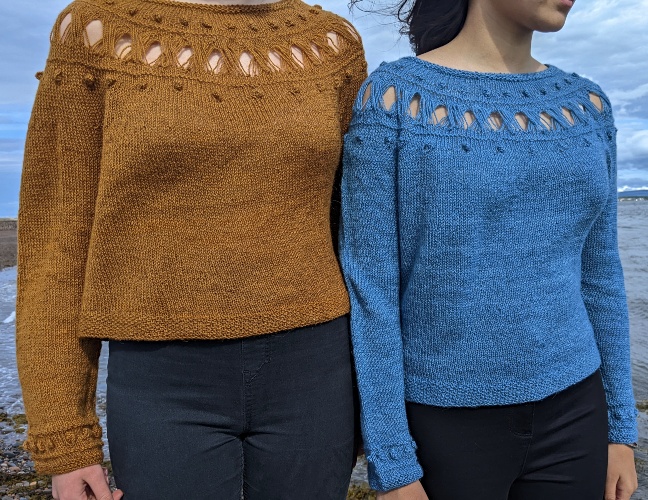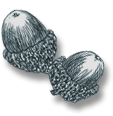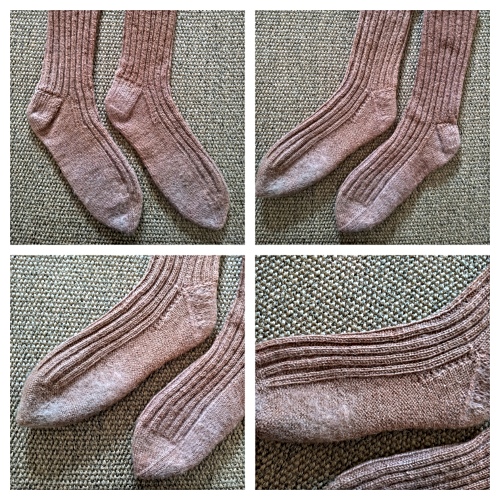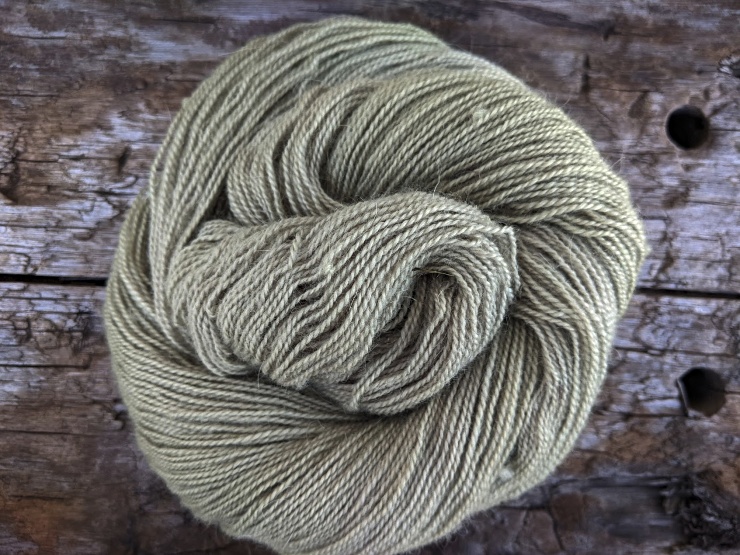Anushka, of The Crimson Stitchery, and I have been working on this collaboration for many months and I’m so pleased that we’re finally ready to share her lovely design – the Sisymbrium Sweater. Sisymbrium is knit with Killen Sock and is a playful, lightweight sweater featuring open crossed stitches, bobbles, and simple textures. This yoke sweater is knit from the top-downwards, in the round. It includes careful shaping to fit loosely around the body with positive ease, and a cropped length.
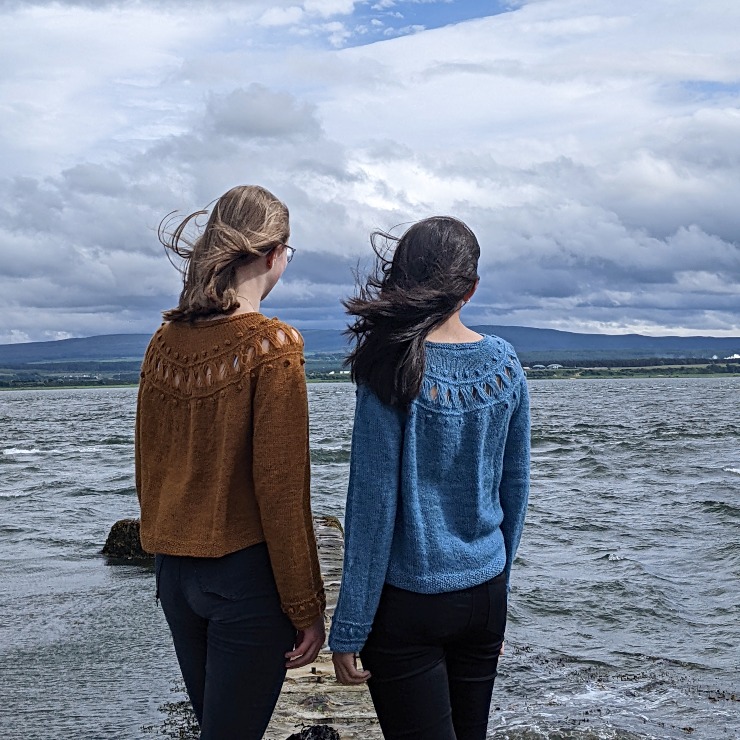
I’ll pop the sizing and yarn quantity details below for information. The pattern is available directly from Anushka via her website. Sisymbrium is designed with a wide range of sizes and it is a comfortable flattering sweater. I had a lot of fun last week with one of my daughters and her friend taking photos of both samples together. The Denim sample is a Size 2 with a lengthened body and the Rust sample is a Size 3 (both girls are approx 34″ full bust).

Anushka has made the most of Killen’s properties by designing Sisymbrium at a very loose gauge which results in the loveliest fabric with loads of drape. It is a quick knit and uses relatively little yarn. I’m so delighted to have had the chance to work with Anushka and that she has been able to create such a beautiful sweater in my yarn. I also need to thank my very lovely friend and talented sample knitter Clare Shaw for her superb work in knitting the Denim sample for me.
YARN (Killen Sock)
Approx 910 (1010, 1100, 1360, 1515) (1665, 1865, 2015, 2270)m/1000 (1105, 1215, 1490, 1660) (1825, 2040, 2205, 2485)yd 4-ply/fingering weight yarn.
Black Isle Yarns Killen Sock 4-ply 2020 Clip (80% Blue Faced Leicester, 20% Mohair; 400m/437yd per 100g)
3 (3, 3, 4, 4) (5, 5, 6, 6) hanks in shade Rust or Indigo
GAUGE
21 stitches and 30 rows = 10cm/4” in Stocking Stitch in the round
Use the relevant needle sizes to achieve this gauge.
Block your swatch before measuring, as the fibres will bloom and the yarn may shrink.
EQUIPMENT
- 4.5mm/US7 knitting needles or size needed to obtain gauge
- 4mm/US6 knitting needles or size needed to obtain gauge
- Circular knitting needles
- Your preferred needle type for knitting small circumferences in the round
- Stitch holder, scrap yarn or spare circular knitting needle
- Cable needle
SIZING 9 sizes available. Choose a size 5-8cm/2-6” larger than your full-chest circumference.
Full-chest circumference: 85.5 (99, 108.5, 118, 129.5) (137, 146.5, 160, 167.5)cm / 33¾ (39, 42¾, 46½, 51) (54, 57¾, 63, 66)”

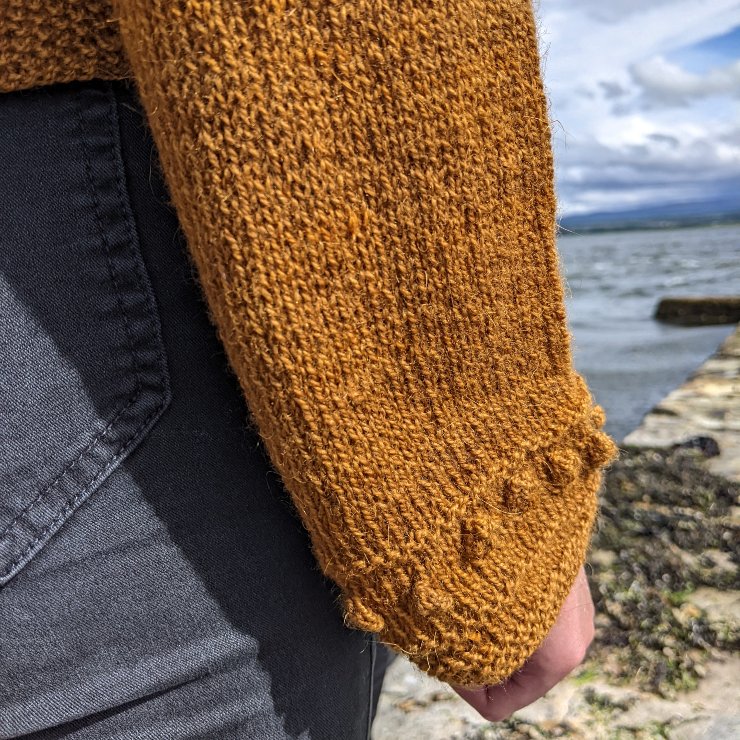
YARN (Killen Sock)
Approx 910 (1010, 1100, 1360, 1515) (1665, 1865, 2015, 2270)m/1000 (1105, 1215, 1490, 1660) (1825, 2040, 2205, 2485)yd 4-ply/fingering weight yarn.
Black Isle Yarns Killen Sock 4-ply 2020 Clip (80% Blue Faced Leicester, 20% Mohair; 400m/437yd per 100g)
3 (3, 3, 4, 4) (5, 5, 6, 6) hanks in shade Rust or Indigo
GAUGE
21 stitches and 30 rows = 10cm/4” in Stocking Stitch in the round
Use the relevant needle sizes to achieve this gauge.
Block your swatch before measuring, as the fibres will bloom and the yarn may shrink.
EQUIPMENT
- 4.5mm/US7 knitting needles or size needed to obtain gauge
- 4mm/US6 knitting needles or size needed to obtain gauge
- Circular knitting needles
- Your preferred needle type for knitting small circumferences in the round
- Stitch holder, scrap yarn or spare circular knitting needle
- Cable needle
SIZING 9 sizes available. Choose a size 5-8cm/2-6” larger than your full-chest circumference.
Full-chest circumference: 85.5 (99, 108.5, 118, 129.5) (137, 146.5, 160, 167.5)cm / 33¾ (39, 42¾, 46½, 51) (54, 57¾, 63, 66)”
